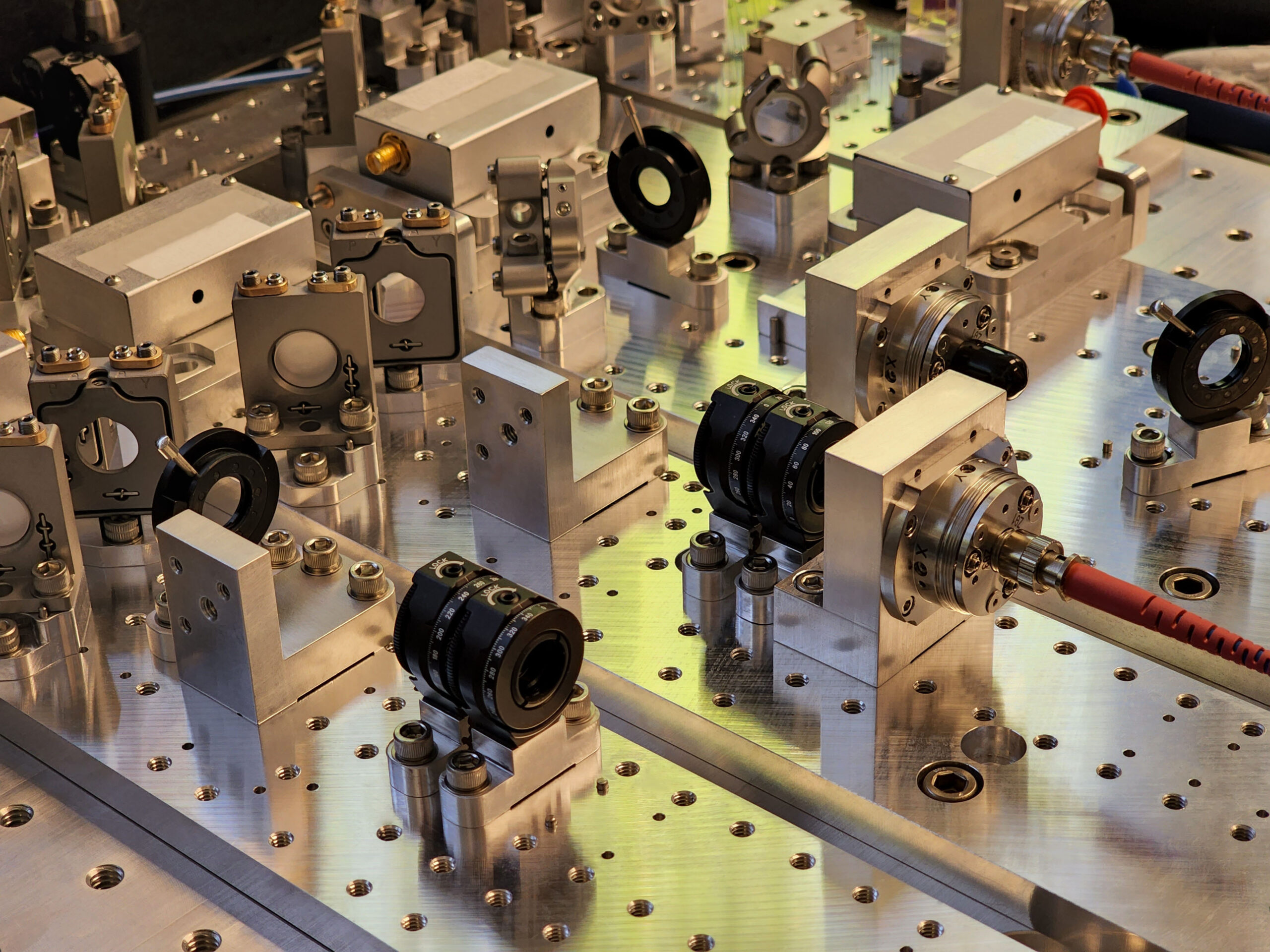
Rob Hays, CEO
Today, researchers at Atom Computing released a pre-print publication on arXiv, demonstrating the ability to perform mid-circuit measurement on arbitrary qubits without disrupting others in an atomic array (update: the article has since been published in Physical Review X). The team applied mid-circuit measurement to detect the loss of qubits from the array (a well-known anticipated error), and successfully replaced the lost qubits from a nearby reservoir.
Path to Fault Tolerance
At Atom Computing, we believe the true potential of quantum computing will be achieved when devices are capable of fault-tolerant computation. Our company’s focus is on leading that race to unlock the enormous potential of quantum computing applications for industrial and scientific uses.
Dr. John Preskill, famed theoretical physics professor at California Institute of Technology, who coined the phrase Noisy Intermediate Scale Quantum (NISQ) to describe the current stage of quantum computing, said it best in 2018: “We must not lose sight of the essential longer-term goal: hastening the onset of the fault tolerant era.”
It will likely require hundreds of thousands or millions of physical qubits to achieve fault tolerant systems that can operate continuously and deliver accurate results, overcoming any errors that may occur during computation just as classical computing systems do. Mid-circuit measurement is one of several key building blocks required to achieve fault tolerant systems:
Mid-circuit measurement has been demonstrated on superconducting and trapped-ion quantum technologies. Atom Computing, however, is the first company to do so on a commercial atomic array system. Recent achievements in the neutral atom research community have shown that atomic arrays are emerging from their “dark horse” status to a preferred architecture with intriguing potential.
Importance of Mid-Circuit Measurement
In quantum computing, circuits act as instructions that tell a quantum computer how to perform a calculation. Circuits define how the programmer intends for the qubits to interact, which gates they need to complete, and in what order they need to be performed.
Mid-circuit measurement involves probing the quantum state of certain qubits, known as ancillas, without disrupting nearby data qubits that perform calculations. The ability to measure or read out specific qubits during computation without disrupting the rest is essential for quantum developers. It enables them to glimpse inside a calculation and use conditional branching to determine which action to take based on results of the measurement, similar to IF/THEN statements used in classical computing. With this capability errors can be detected, identified, and corrected in real time.
Dr. Ben Bloom, Atom Computing Founder and Chief Technology Officer, called this demonstration an important step for the company’s technology, which uses lasers to hold neutral atom qubits in a two-dimensional array to perform computations.
“This is further proof that atomic array quantum computers are rapidly gaining ground in the race to build large-scale, fault-tolerant quantum computers,” Bloom said. “Mid-circuit measurement enables us to understand what is happening during a computation and make decisions based on the information we are seeing,”
Doing this is tricky. Qubits, whether they are in an atomic array, ion trap, or on a chip, are situated microscopically close. Qubits are finicky, fragile, and sensitive. A stray photon from a laser or a stray electric field can cause the wrong qubit to decohere and lose its quantum state.
The Atom Computing team exhibited a technique to “hide” data qubits and shield them from the laser used to measure ancillas without losing any of the quantum information stored in the data qubits. They also showed a competitive SPAM fidelity, a metric that states how well a qubit can be read out. This work demonstrates an important pathway to continuous circuit processing.
What’s Next
Atom Computing is building quantum computers from arrays of neutral atoms because of the potential to significantly scale qubit numbers with each generation. We previously demonstrated record coherence times on our 100-qubit prototype system and are now working on larger scale production systems to offer as a commercial cloud service. Our demonstration of mid-circuit measurement, error detection, and correction was performed on these next-generation systems.
Our journey toward fault tolerance continues. We are working to achieve all the necessary “ingredients” listed above on our current systems and on future machines with the Defense Advanced Research Projects Agency. DARPA selected Atom Computing to explore how atomic arrays of neutral atoms can accelerate the path to fault-tolerant quantum computing.